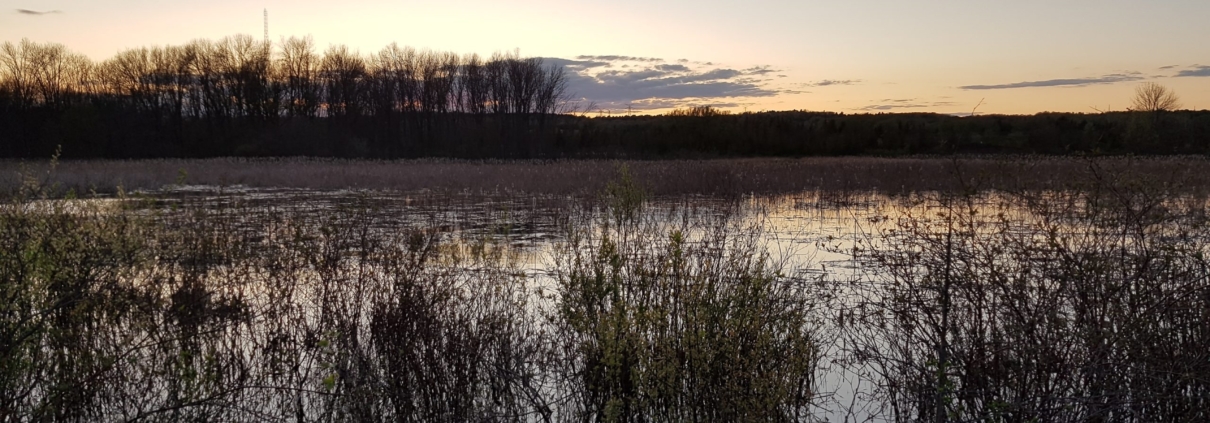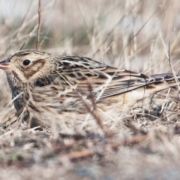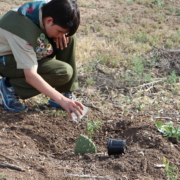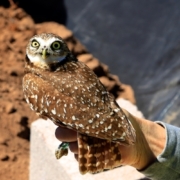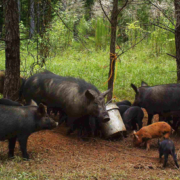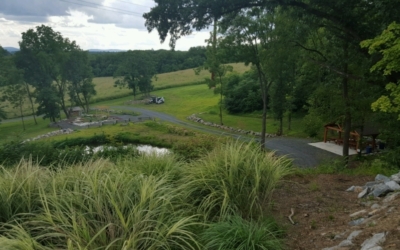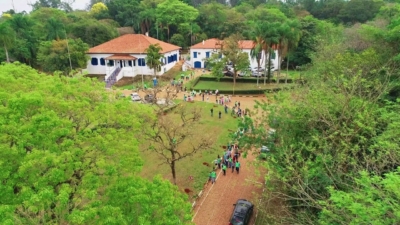Ontario Power Generation | Crossing the Fence Line to Drive Regional Conservation Action
The expansion of conservation activities on a site can take many forms. While growth often entails adding new projects or increasing the area of an existing habitat, companies that look beyond their fence lines to support other local conservation efforts can amplify their own impact while forging invaluable partnerships and building environmental resilience.
The Ontario Power Generation (OPG) facility in Wesleyville, Ontario (60 miles east of Toronto) sits on 1,200 acres of agricultural and pasture lands, as well as forested areas and provincially significant wetlands. Wesleyville Creek, one of the highest-quality coldwater streams in the region, flows across the property, draining into Lake Ontario. For over twenty years, these natural areas have hosted an extensive conservation program that has allowed OPG to strengthen its relationship with neighboring landowners and support local scientific research.
OPG Wesleyville’s conservation work began in 1997 with an environmental survey that identified two opportunities for OPG to increase on-site biodiversity: reforestation and restoration of the lower reaches of the Wesleyville Stream to support brook trout and other native fish, which face threats such as predation by sea lampreys and the warming of coldwater streams from climate change and deforestation.
In response to these findings, starting in 1998, employees planted native trees (including pine, spruce, ash, cedar, maple and oak varieties), resulting in over 40,000 seedlings planted on the property over the decades. Additionally, Wesleyville employees began work on a multi-phase stream restoration project, the first step of which entailed clearing out excessive sediment and removing beaver dams that were confining the creek’s brook trout population to areas with limited food and few places to spawn.
Over time, OPG employees, with assistance of contractors and local conservation authorities, have removed in-stream culverts for greater trout mobility, planted willows to provide shade and moderate the creek’s temperature and, with the help of Fisheries and Oceans Canada, installed a barrier that prevents invasive sea lampreys from entering the creek. Monitoring data collected by the local Ganaraska Region Conservation Authority (GRCA) indicates that brook trout spawning activity is increasing, sea lampreys are being effectively controlled and the creek’s water quality has remained high.
Since implementing these initial projects, OPG has continued to grow its conservation efforts. In 2009, 16 nest boxes for cavity-nesting birds like tree swallows and bluebirds were installed. Routine monitoring conducted later that year revealed a pair of young ospreys nesting atop a utility pole. When the ospreys flew south at the end of the year, employees removed wires from the pole and installed a more stable nesting platform. Today, the site features 57 nest boxes, about 95% of which are used by birds each breeding season, and ospreys have fledged nearly every year. Both ospreys and songbirds can find food in the restored forest, and within the site’s two barrier beach marshlands, which OPG fenced off and began to monitor in 2011.
In addition to managing these on-site projects, OPG has driven conservation action on neighboring properties, which also contain portions of Wesleyville Creek. In 2017, OPG and adjacent landowners partnered in a cost- and data-sharing program that has resulted in uniform creek management practices across the sites, and installation of 20 nest boxes on neighboring lands.
Ashley Fox, Environmental Advisor at OPG, recommends other conservation teams emulate these efforts. “Collaboration with neighbors has helped OPG’s efforts extend beyond its borders. Considering the benefits of landowner partnerships, it’s worth exploring what your neighbors are already doing. From there, you can discuss opportunities to reduce each company’s workload, share scientific information and stay informed about local changes.”
Moving forward, OPG and its neighbors intend to work with the Nature Conservancy and the GRCA to control the use of ATVs and dirt bikes near the creek, as these recreational vehicles can destroy spawning sites and increase erosion along the banks.
In addition to sharing monitoring data with its neighbors, OPG and its partners have made valuable contributions to local research. Every year, grasses and other material from bluebird and tree swallow nests are provided to the Royal Ontario Museum in support of research on cavity-nesting birds, and monitoring data on these species is sent to the Ontario Eastern Bluebird Society, who integrates the information into its spring newsletter. Data collected in the wetlands is used by Environment and Climate Change Canada (a federal agency) as baseline information in studies on biodiversity and climate change’s impact on wetlands.
Ashley says that these opportunities for collaboration have been critical to the Wesleyville program’s success. “The most rewarding part of our work has been two-fold: meeting new and enthusiastic citizen scientists, and collaborating with our community and professional partners to complete work that has a measurable impact on the local ecosystem. The success of the Wesleyville program is due to the incredible team effort made by a variety of employees and the commitment of OPG’s neighbors and community partners.”
With its robust partnerships and commitment to maintaining healthy habitats on- and off-site, the OPG Wesleyville program has thrived for decades, and its employees and partners are primed to serve as regional conservation leaders in the years to come.
Related Content
Blogs:
- 6 Ways to Protect Your Local Watershed
- Citizen Science Programs: Volunteer Your Time and Gain Valuable Skills
- Nest Boxes Can Provide Overwintering Cover
Webinars:
- Building Effective Partnerships: Case Studies
- Invasive Species: An Introduction | Part 1
- Water Management: Policies, Issues and Voluntary Solutions
- Watershed Conservation: Building Partnerships and Securing Funding for Your Projects
- Wetland Habitats: Identification, Monitoring and Use as Outdoor Classrooms
- What is Monitoring, Why It’s Important and How to Do It Well
White Papers:
- Birds: Nature’s Key Performance Indicators
- The Critical Role of the Private Sector in Species Recovery and Protection
- Enhancing Habitat Connectivity Through Corporate Conservation
Project Guidances:
Quick Facts
| Site Name: | Ontario Power Generation Wesleyville Site |
|---|---|
| Category: | Member Spotlight |
| Tags: | avian, invasive species, wetlands |
| Site Location: | Wesleyville, Ontario, Canada |
| Partners: | Central Lake Ontario Conservation Authority, Environment and Climate Change Canada, Fisheries and Oceans Canada, Friends of Wesleyville Village, Ganaraska Region Conservation Authority, Great Lakes Fishery Commission, Neighboring Landowners, Titan Demolition |
| Project Types: | Avian, Invasive Species, Wetlands and Water Bodies |
| Certification Since: | 2019 |
| Certification Level: | Gold Certified |
| WHC Index Link: | Learn more about this program |
